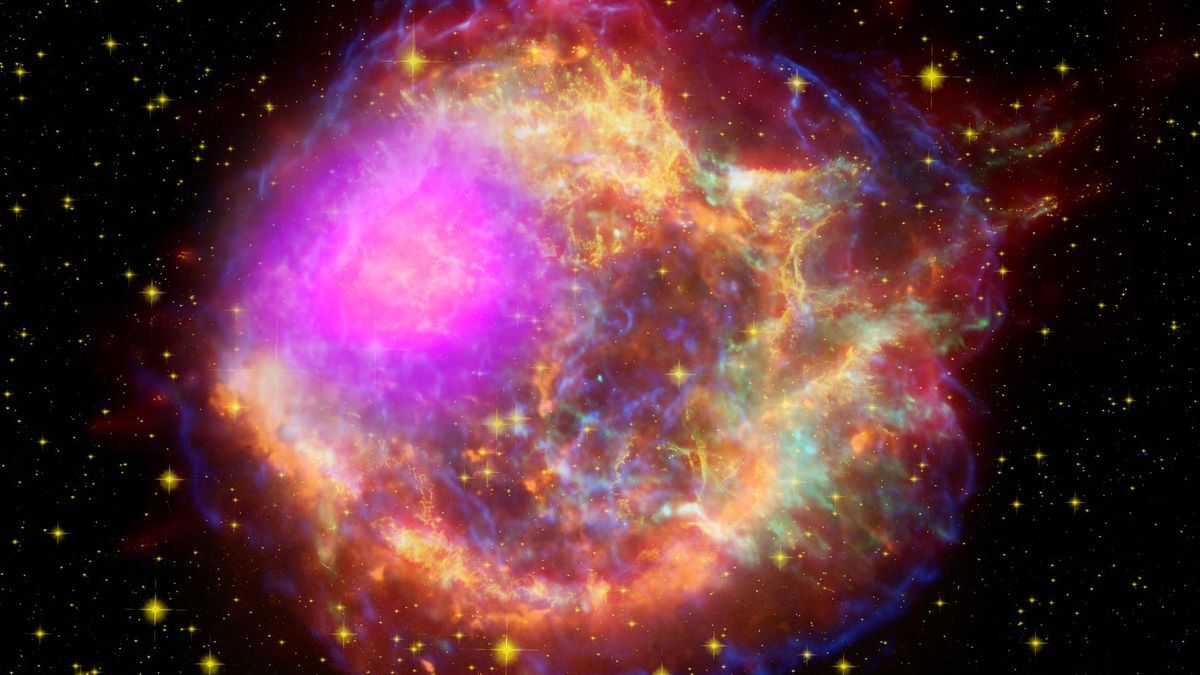
What is a supernova? Imagine a star exploding with the power of a billion suns. That’s a supernova! These cosmic fireworks happen when a star reaches the end of its life. Supernovas can outshine entire galaxies for a short time, releasing massive amounts of energy. They play a crucial role in the universe by creating heavy elements like gold and silver. Without supernovas, the universe would lack many of the elements we find on Earth. Astronomers study these explosions to understand the life cycles of stars and the evolution of galaxies. Ready to dive into some mind-blowing facts about these stellar giants?
What is a Supernova?
A supernova is one of the most powerful and luminous events in the universe. It occurs when a star explodes, releasing an enormous amount of energy. These cosmic explosions can outshine entire galaxies for a short period.
- A supernova can briefly outshine an entire galaxy, emitting more energy in a few weeks than our Sun will in its entire lifetime.
- Supernovae are a key source of heavy elements in the universe, such as gold and uranium.
- The explosion can trigger the formation of new stars by compressing nearby gas clouds.
Types of Supernovae
Supernovae are classified into different types based on their characteristics and the processes leading to their explosion.
- Type I supernovae lack hydrogen lines in their spectra, while Type II supernovae show hydrogen lines.
- Type Ia supernovae result from the thermonuclear explosion of a white dwarf star in a binary system.
- Type II supernovae occur when a massive star exhausts its nuclear fuel and its core collapses under gravity.
Famous Supernovae in History
Throughout history, several supernovae have been observed and recorded by astronomers.
- The supernova of 1054 AD, observed by Chinese astronomers, created the Crab Nebula.
- Tycho Brahe observed a supernova in 1572, which became known as "Tycho's Supernova."
- Johannes Kepler documented a supernova in 1604, often referred to as "Kepler's Supernova."
The Role of Supernovae in the Universe
Supernovae play a crucial role in the evolution of galaxies and the distribution of elements.
- Supernovae distribute heavy elements throughout the galaxy, enriching the interstellar medium.
- The shock waves from supernovae can trigger the formation of new stars.
- Supernova remnants, like the Crab Nebula, provide valuable information about the explosion and the star that caused it.
How Do Scientists Study Supernovae?
Studying supernovae helps scientists understand the life cycles of stars and the dynamics of galaxies.
- Astronomers use telescopes like the Hubble Space Telescope to observe supernovae in distant galaxies.
- Supernovae are detected using various wavelengths, including visible light, X-rays, and radio waves.
- Computer simulations help scientists model the processes leading to a supernova explosion.
The Aftermath of a Supernova
The remnants of a supernova can have lasting effects on their surroundings and provide insights into the explosion.
- A neutron star or black hole can form from the collapsed core of a massive star after a supernova.
- Supernova remnants, such as the Veil Nebula, are visible for thousands of years after the explosion.
- The energy released by a supernova can heat surrounding gas to millions of degrees, creating X-ray-emitting hot gas clouds.
Supernovae and Cosmic Rays
Supernovae are believed to be a significant source of cosmic rays, high-energy particles that travel through space.
- Cosmic rays from supernovae can affect the Earth's atmosphere and contribute to cloud formation.
- The shock waves from supernovae accelerate particles to nearly the speed of light, creating cosmic rays.
- Studying cosmic rays helps scientists understand the processes occurring in supernova remnants.
Supernovae in Popular Culture
Supernovae have captured the imagination of writers, filmmakers, and artists, appearing in various forms of media.
- The 1987A supernova in the Large Magellanic Cloud was the first supernova visible to the naked eye in nearly 400 years.
- Supernovae have been featured in science fiction movies, such as "Star Trek" and "Doctor Who."
- The term "supernova" is often used metaphorically to describe something that explodes in popularity or impact.
The Future of Supernova Research
Advancements in technology and new discoveries continue to enhance our understanding of supernovae.
- The James Webb Space Telescope will provide unprecedented views of supernovae and their remnants.
- Gravitational wave detectors may help scientists observe supernovae through the ripples they create in spacetime.
- Future missions, like the Large Synoptic Survey Telescope, aim to discover thousands of new supernovae each year.
Fun Facts About Supernovae
Supernovae are not just scientifically significant; they also have some fascinating and fun aspects.
- The word "supernova" comes from the Latin words "super," meaning "above," and "nova," meaning "new."
- Some supernovae, known as "zombie stars," can explode multiple times, defying the typical one-time explosion rule.
The Final Blast
Supernovas are mind-blowing cosmic events that shape our universe. They create heavy elements, trigger star formation, and even influence life on Earth. These stellar explosions are not just spectacular light shows; they’re essential to the cosmic cycle of birth and rebirth. Understanding supernovas helps scientists unlock the mysteries of the universe, from the origins of elements to the dynamics of galaxies.
Whether you're a budding astronomer or just curious about the cosmos, knowing these facts can deepen your appreciation for the universe. Supernovas remind us of the incredible forces at play in space and our connection to the stars. So next time you gaze at the night sky, remember that some of those twinkling lights might be the remnants of a supernova, a testament to the ever-changing, awe-inspiring universe we call home.
Was this page helpful?
Our commitment to delivering trustworthy and engaging content is at the heart of what we do. Each fact on our site is contributed by real users like you, bringing a wealth of diverse insights and information. To ensure the highest standards of accuracy and reliability, our dedicated editors meticulously review each submission. This process guarantees that the facts we share are not only fascinating but also credible. Trust in our commitment to quality and authenticity as you explore and learn with us.


